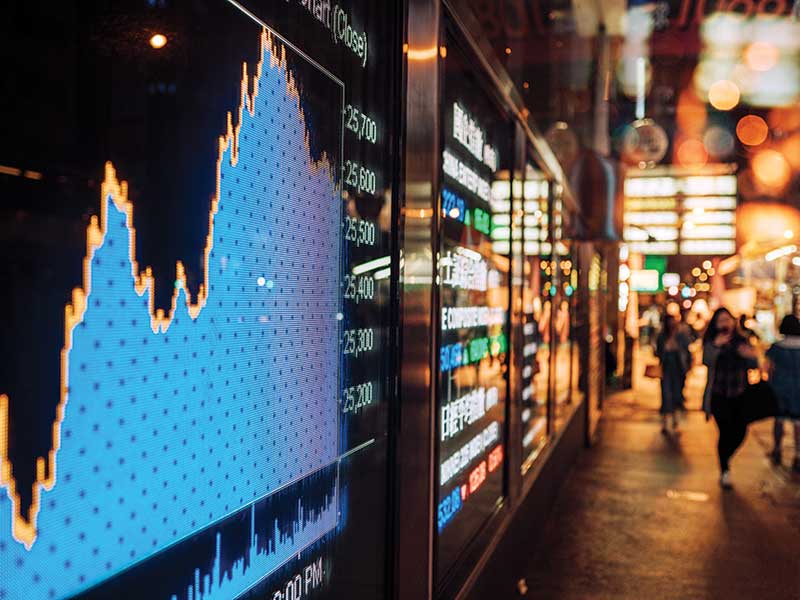
TD Asset Management Inc.’s decision to close its five ESG-focused ETFs doesn’t reflect a decreased commitment to ESG — quite the opposite, the firm says.
“Our head of ESG reports right into the [chief investment officer] David Sykes,” said Jonathan Needham, vice-president and director, lead of ETF distribution, with TDAM.*
Needham added that all of TDAM’s portfolios consider ESG as an important risk factor. “In addition to the fact that there wasn’t a lot of interest and there was a lot of confusion when you put an ESG title on a particular product … we felt it was prudent to close [the five] funds,” he said.
TDAM announced in April that it would terminate its five TD Morningstar ESG ETFs, which launched in November 2020. The funds will be delisted on or about June 21. The combined assets under management (AUM) for the suite was $32 million as of May 31, according to National Bank Financial Markets.
“We don’t really look at product closures unless philosophically they didn’t fit our mix, or they’re under that $20-million per-fund mark,” Needham said.
TDAM continues to offer ESG-specific mutual funds, and its decision to close the ETFs is part of a larger trend.
“ESG ETF launches have slowed down since 2023. In fact, so far in 2024, we haven’t seen any new launches or filings in the ESG ETF space in Canada,” said Tiffany Zhang, vice-president of ETFs & Financial Products Research with National Bank Financial.
Delistings of ESG ETFs accelerated between 2023 and 2024, she added, and inflows slowed too. The total number of ESG ETFs sits at 133 and $18.8 billion in AUM (4.4% of all AUM), down from a peak of 143 products in 2022.
“We do believe the concept of ESG has true staying power based on our conversations with financial advisors and institutional clients,” Zhang said. “Many of them have used or are considering allocating to ESG ETFs in their portfolios. So I wouldn’t be surprised at all if the flows reaccelerate in the future.”
Needham said TDAM’s remaining ETFs fall into four main categories: passive, active, broad-based thematic (such as technology and health care) and quant (such as factor-based).
Per National Bank, TDAM had the sixth-highest market share of all ETF providers as of May 31, with $15.3 billion in AUM (3.6%).
Needham said he forecasts a 12.5% growth rate for domestic ETF AUM, and foresees the industry reaching $750 billion by the end of 2029. His goal is for TDAM to reach $75 billion in AUM over the same period.
He also believes TDAM will be the fifth-largest ETF provider by 2025.
Needham said the necessary growth will come from product launches in fixed income in the near future, and next from launching mutual funds that hold TD ETFs. The third phase is to launch ETFs based on TDAM’s active mutual funds lineup.
Most recently, TDAM released a suite of target maturity bond ETFs in April, which has since amassed $170 million in AUM. “I think we’re going to continue to expand that lineup” of fixed income products, Needham said.
Needham didn’t rule out growth by acquisition, but said that isn’t required. Instead, “I think more strategic partnerships would likely make sense.” Specifically, TDAM would bring on subadvisors or act as a subadvisor for others.
Currently, TDAM’s ETF distribution is split evenly between external sources and the wider bank itself. Needham said the balance needs to shift in favour of external distribution for TDAM to reach its $75-billion goal.
He’s optimistic. “Even in the last 12 months, we’ve had massive growth of our external distribution,” he said. But even a well-known institution like TDAM needs to prove itself to gain shelf space.
“When you launch a quant or active [ETF], people want to see a three-year or five-year track record, particularly at the head office level with the client-focused reforms,” he said.
For example, TDAM’s enhanced dividends suite, which Needham said has had very strong relative performance, just hit $1 billion in AUM after five years. “Even with a brand like TD, [is it] an overnight success story? No.”
Over the next few years, Needham foresees more mutual fund incumbents entering the ETF space to mixed success. And he sees room for smaller ETF players to thrive.
“You’re going to see some of these smaller, nimbler companies come out with ideas that are probably very suitable for a client’s interests, and may or may not be in alignment with the philosophy of some of the broader firms,” he said.
Another ETF firm that has publicized an AUM goal is Global X Investments Canada Inc., formerly known as Horizons ETFs Management (Canada) Inc. Over the next five years, the firm wants to double its AUM and increase its market share to 10%. Global X had $31.5 billion in AUM as of May 31, equalling 7.3% market share, according to National Bank Financial.
*Clarification: TDAM clarified following publication of this article that ESG factors are an important area of focus and research, rather than integrated into everything the firm does, as Needham previously stated.